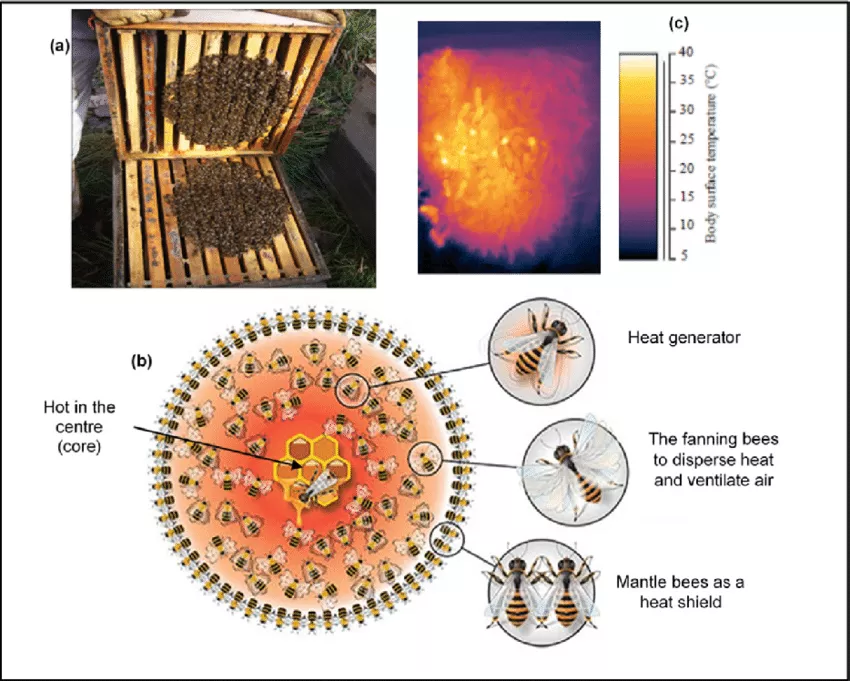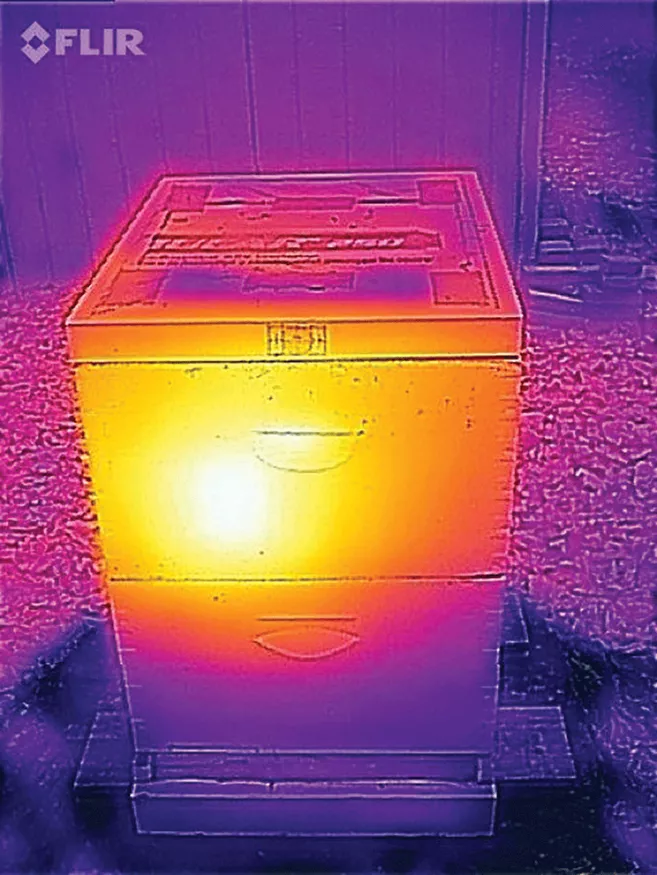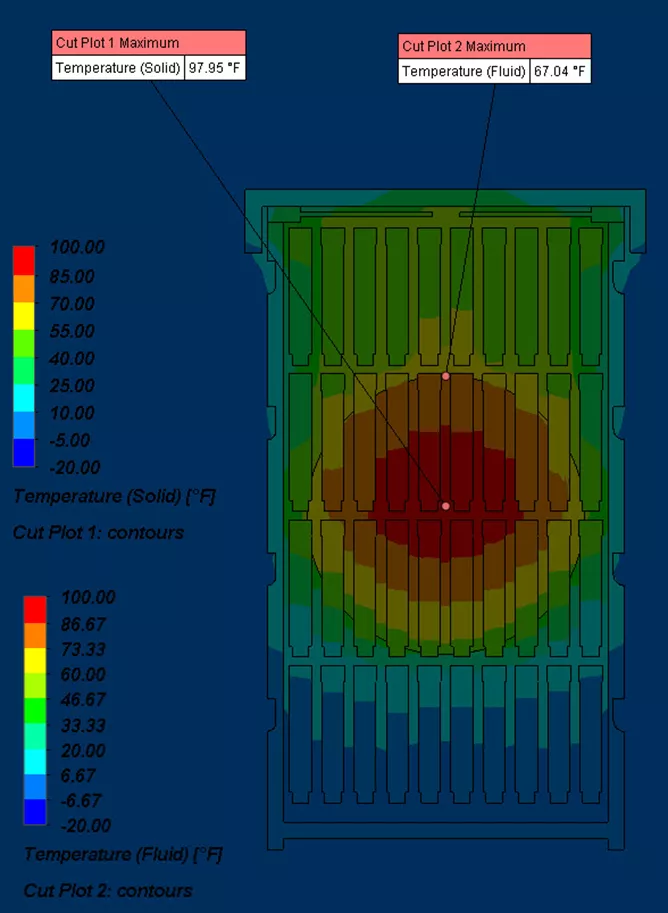Winter Beehive Analysis Using SOLIDWORKS Flow & Thermal Simulation
Since I started beekeeping, I've always wondered what happens during the winter. How do the bees stay warm? In this article, we use SOLIDWORKS to perform a thermal and flow simulation to analyze how much energy bees use to maintain the temperature they need to survive.
How Do Bees Stay Warm in the Winter?
Bees can disconnect their wings from the muscles that drive them, meaning they can use the muscles that would beat their wings without making any air movement and, by doing so, generate heat (kind of like us stomping our feet to stay warm in the winter).
To better understand this behavior, I decided to design a beehive model in SOLIDWORKS and perform a simulation study. With this simulation study, we can better understand how much energy the bees use to stay warm.
What Does a Beehive Look Like in the Winter?
In the images below, we can see what bees look like in the hive during winter months and a thermal representation of the bees in the hive generating heat. Not only do we see the cluster of bees in a cylindrical form, but the roles the bees play to create and maintain the heat.

Image courtesy of: https://www.researchgate.net
The infrared image below shows the bees inside the hive and the cluster of bees generating the heat within.

Image courtesy of: https://www.beeculture.com
Creating a Beehive in SOLIDWORKS
I started by creating a beehive with medium boxes and frames.


SOLIDWORKS Flow & Thermal Simulation
Now that I've created the SOLIDWORKS assembly model, I can start working on the simulation. In this simulation, flow simulation is used outside (as air is a gas), and thermal simulation is used for the inside when looking at the temperatures. I also did some research and used custom properties for the Bees, Honey (Wax/Comb), and Wood materials, as these materials have unique thermal properties.
Now, let’s consider the weather. In my climate, winter conditions can range from freezing to below freezing. In general, bees try to keep the hive at 70°F. That can vary somewhat depending on outside weather conditions that change abruptly.
With the conditions being constant, this is the energy that the bees need to generate when clustered:
- At 30°F outside, it will take 15 Watts to maintain the 70°F inside the hive.
- 1 Watt per hour = 859.845 Calories. This means that 12,897.68 Calories are being used to keep the hive warm.
- At 0°F, it will take 30 Watts, meaning that 25,795.35 Calories are being used.
- And at -30°F and 48 Watts, 41,272.56 Calories are being used.
To put that into perspective, a 250lb person running a six-minute mile for one hour would only burn 1,905 Calories.
Below is a visual representation of the study.
Watts are taken from the heat generation of the bees (solid body).
Max Fluid temp of up to 70°F. Bee temp (solid temp) up to 100°F.


Conclusion
As you can see, using SOLIDWORKS to create these models and perform the thermal simulation analysis has been an essential tool for learning more about bee colonies and understanding the amount of energy they must expend in order to keep a colony warm during winter months. If you have questions or would like to learn more about the CAD and simulation tools used in this article, please contact us.
Related Articles
SOLIDWORKS Flow Simulation 2024 - What's New
Thermal Analysis Using SOLIDWORKS: FEA vs CFD
Fastest Way to Cool a Hot Dog: SOLIDWORKS Flow Simulation Study
SOLIDWORKS Flow Simulation FEA Load Transfer: Setup, Results, & Static Study
How to Set Up a Thermal Study in SOLIDWORKS Simulation Professional

About Matthew Kusz
Matthew Kusz is a Senior Technical Support Engineer at GoEngineer. When Matthew isn’t assisting customers with their engineering challenges, he spends his free time repairing antique watches/clocks, designing furniture, tending his aquariums and learning about bee keeping.
Get our wide array of technical resources delivered right to your inbox.
Unsubscribe at any time.